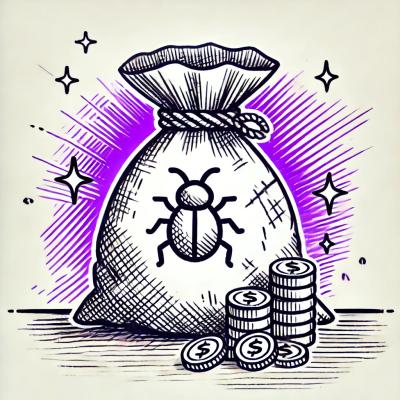
Security News
AI Slop Is Polluting Bug Bounty Platforms with Fake Vulnerability Reports
AI-generated slop reports are making bug bounty triage harder, wasting maintainer time, and straining trust in vulnerability disclosure programs.
@netlify/parse-domain
Advanced tools
Splits an url into sub-domain, domain and effective top-level-domain
Splits a URL into sub-domain, domain and the top-level domain.
Since domains are handled differently across different countries and organizations, splitting a URL into sub-domain, domain and top-level-domain parts is not a simple regexp. parse-domain uses a large list of known top-level domains from publicsuffix.org to recognize different parts of the domain.
npm install --save parse-domain
// long subdomains can be handled
expect(parseDomain("some.subdomain.example.co.uk")).to.eql({
subdomain: "some.subdomain",
domain: "example",
tld: "co.uk"
});
// protocols, usernames, passwords, ports, paths, queries and hashes are disregarded
expect(parseDomain("https://user:password@example.co.uk:8080/some/path?and&query#hash")).to.eql({
subdomain: "",
domain: "example",
tld: "co.uk"
});
// unknown top-level domains are ignored
expect(parseDomain("unknown.tld.kk")).to.equal(null);
// invalid urls are also ignored
expect(parseDomain("invalid url")).to.equal(null);
expect(parseDomain({})).to.equal(null);
// custom top-level domains can optionally be specified
expect(parseDomain("mymachine.local",{ customTlds: ["local"] })).to.eql({
subdomain: "",
domain: "mymachine",
tld: "local"
});
// custom regexps can optionally be specified (instead of customTlds)
expect(parseDomain("localhost",{ customTlds:/localhost|\.local/ })).to.eql({
subdomain: "",
domain: "",
tld: "localhost"
});
It can sometimes be helpful to apply the customTlds argument using a helper function
function parseLocalDomains(url) {
return parseDomain(url, {
customTlds: /localhost|\.local/
});
}
expect(parseLocalDomains("localhost")).to.eql({
subdomain: "",
domain: "",
tld: "localhost"
});
expect(parseLocalDomains("mymachine.local")).to.eql({
subdomain: "",
domain: "mymachine",
tld: "local"
});
parseDomain(url: string, options: ParseOptions): ParsedDomain|nullReturns null if url has an unknown tld or if it's not a valid url.
ParseOptions{
// A list of custom tlds that are first matched against the url.
// Useful if you also need to split internal URLs like localhost.
customTlds: RegExp|Array<string>,
// There are lot of private domains that act like top-level domains,
// like blogspot.com, googleapis.com or s3.amazonaws.com.
// By default, these domains would be split into:
// { subdomain: ..., domain: "blogspot", tld: "com" }
// When this flag is set to true, the domain will be split into
// { subdomain: ..., domain: ..., tld: "blogspot.com" }
// See also https://github.com/peerigon/parse-domain/issues/4
privateTlds: boolean - default: false
}
ParsedDomain{
tld: string,
domain: string,
subdomain: string
}
Unlicense
FAQs
Splits an url into sub-domain, domain and effective top-level-domain
We found that @netlify/parse-domain demonstrated a not healthy version release cadence and project activity because the last version was released a year ago. It has 9 open source maintainers collaborating on the project.
Did you know?

Socket for GitHub automatically highlights issues in each pull request and monitors the health of all your open source dependencies. Discover the contents of your packages and block harmful activity before you install or update your dependencies.

Security News
AI-generated slop reports are making bug bounty triage harder, wasting maintainer time, and straining trust in vulnerability disclosure programs.

Research
Security News
The Socket Research team investigates a malicious Python package disguised as a Discord error logger that executes remote commands and exfiltrates data via a covert C2 channel.

Research
Socket uncovered npm malware campaign mimicking popular Node.js libraries and packages from other ecosystems; packages steal data and execute remote code.